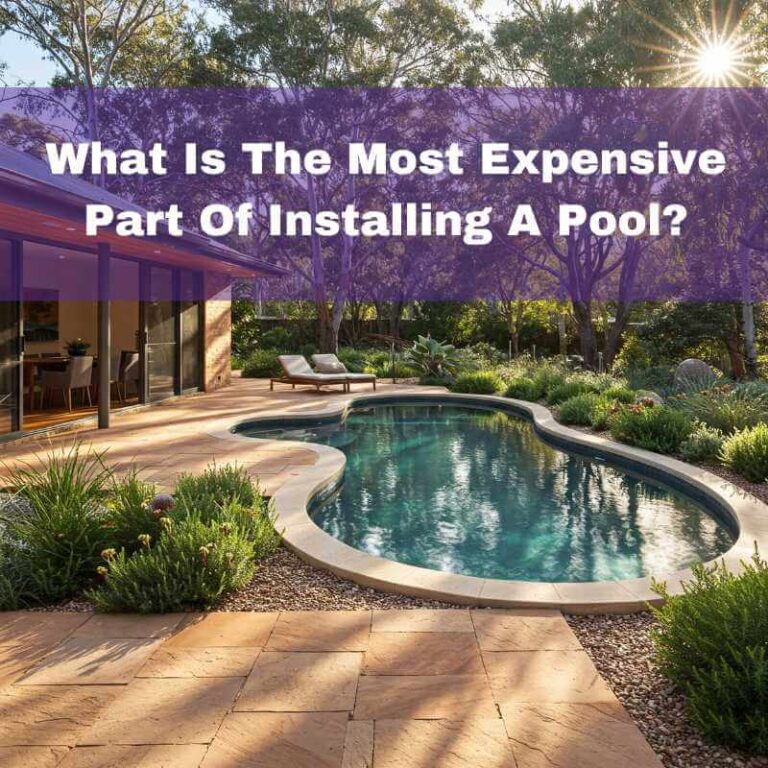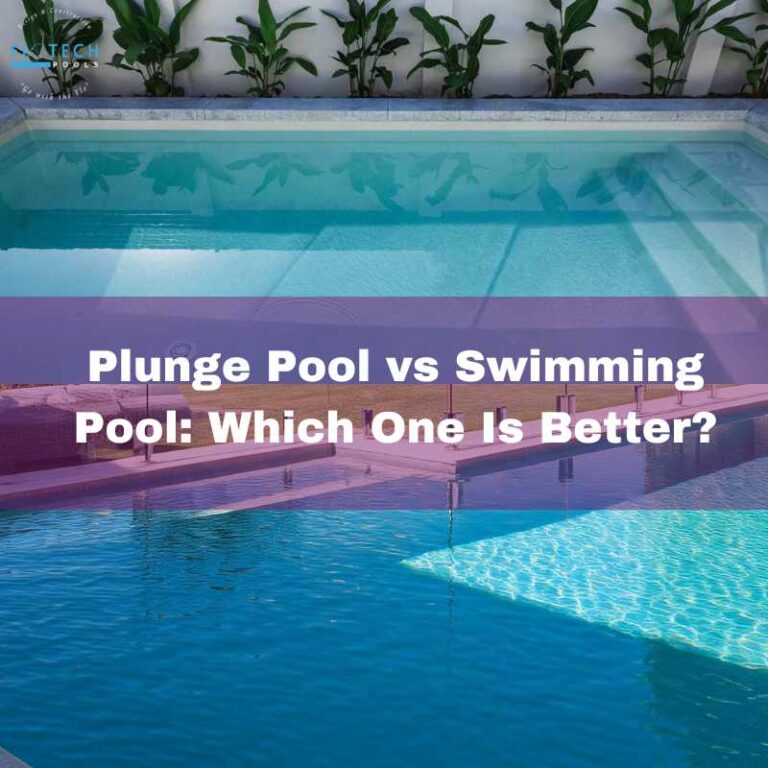Plunge Pools Gold Coast is the leading pool builder which offers custom pool designs to complement your home in Queensland.
As pools are becoming more popular, we want to make sure that we offer our designs at an affordable price. With all our models we guarantee a cost effective solution for your perfect entertainment area.
Depending on your needs, you can either choose between one of our precast models, or we create a small backyard plunge pool design for you from scratch, including swim jets, landscape, and heating.
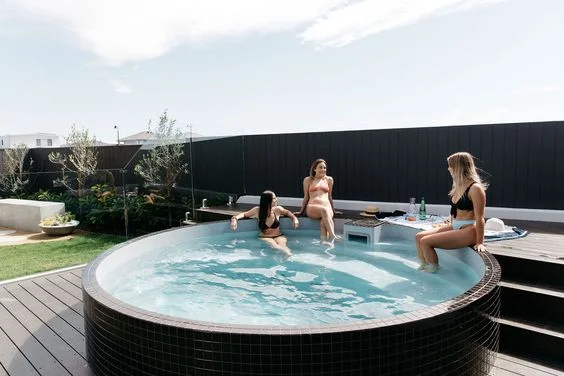
Table of Contents
ToggleSo How Much Does A Plunge Pool Cost?
The sun’s up, and the balmy breeze of the Gold Coast is calling you out. It’s a perfect day for a refreshing plunge, don’t you think? Imagine a private oasis where you can unwind, right in your backyard. This idyllic scene becomes a reality with the addition of a plunge pool, a luxury that many Gold Coast residents aspire to. But the golden question is: What’s the plunge pool cost on the Gold Coast?
Well, sit tight, and we’ll dive right into it, without causing a splash on your wallet.
Our Summary
- Size & Shape: No two plunge pools are the same, the size and shape influence the cost of the shell and installation. The bigger the pool, the bigger the investment.
- Material Used: Both precast and fibreglass plunge pools are the cheapest options. Both are beautiful in design and have similar maintenance requirements. Larger pools with more customisation options, such as concrete pools that are made on-site, will require a larger investment.
- Installation and Construction: Including site accessibility, excavation, plumbing and electrical setup, labour costs, and other permissions and inspections will have an impact on the price.
- Optional Extras:
In summary, when it comes to the cost of installing a small plunge pool, one size doesn’t fit all. The price for precast models can average anywhere from $40,000 to $60,000 including the shell and full installation. A high-end, fully-customised and equipped custom concrete model can cost well over $60,000 to $120,000 including installation. But if you’re looking for something outstanding and beautiful that lasts at least two lifetimes, it’s definitely worth it.
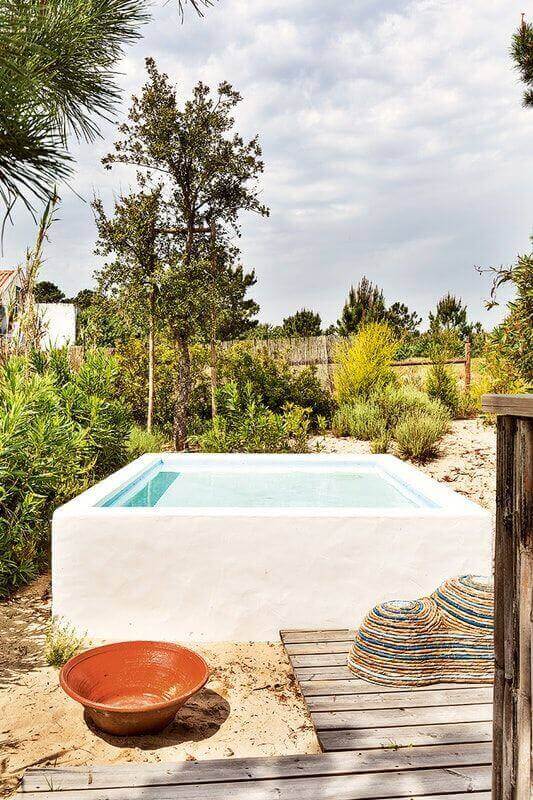
Factors Influencing the Cost
1. Size and Shape
No two swimming pools are the same, just like our backyard dreams. The pool’s dimensions and design complexity can significantly impact the price. The larger the pool, the more materials, labour and time are required to install it. The price difference between a smaller and larger plunge pool can be significantly different – so make sure to consider the right size for your budget.
For our precast models, we specialise in installing the Plungie models: PLUNGIE Models Size & Shape
If you’re in need of a custom size with custom features, don’t hesitate to contact us for a personalised quote.
2. Material
From fibreglass to concrete or vinyl liner, the choice of material can send the price either skyrocketing or dipping. Let’s dig deeper…
A. Fiberglass Pools: A Balance of Quality and Convenience
Fiberglass pools come as preformed shells, which are then placed into the ground. As a result, installation is quicker than with other types. These pools are also low-maintenance, due to the non-porous nature of fiberglass, which can help save money in the long run.
But convenience comes with a price. Fiberglass pools generally have a higher initial cost than vinyl liner pools, but they’re usually cheaper than a small custom concrete pools. Their shells can range from $15,000 to $25,000. A complete installation can range anywhere from $40,000 to $60,000.
B. Concrete Pools: The Price of Flexibility and Durability
Concrete pools offer unrivalled flexibility in terms of design and size. You can customise the shape, depth, and features of your pool to match your exact vision.
However, this level of customisation comes with a higher price tag. Concrete pools are typically the most expensive type, ranging from $50,000 to over $100,000.
C. Precast Plunge Pools: A Cost-Effective Solution
Precast plunge pools are a popular choice for those on a budget. These pools are premade by the manufacturer and delivered directly to the site. They are generally the cheapest option,with the fibreglass version. Precast shells can range anywhere from $15,000 to $30,000, depending on the manufacturer. Most pool installers can offer a full installation, including permits, excavation, etc., starting from $40,000 to $60,000 on average.
D. Tile or Pebble Finishes: Adding a Touch of Luxury
Apart from the base material, the type of finish used in the pool can also influence the cost. For instance, a standard plaster finish is usually included in the base price of concrete pools, but if you wish to upgrade to a more luxurious pebble or glass bead finish, this can add several thousands to the total cost.
3. Installation and Construction (Included in Base Price)
Average Price Range: Additional $2,000 – $5,000
The installation process is a significant cost driver when it comes to building a spa. This isn’t just about digging a hole and filling it with water. There are multiple components that go into the installation process.
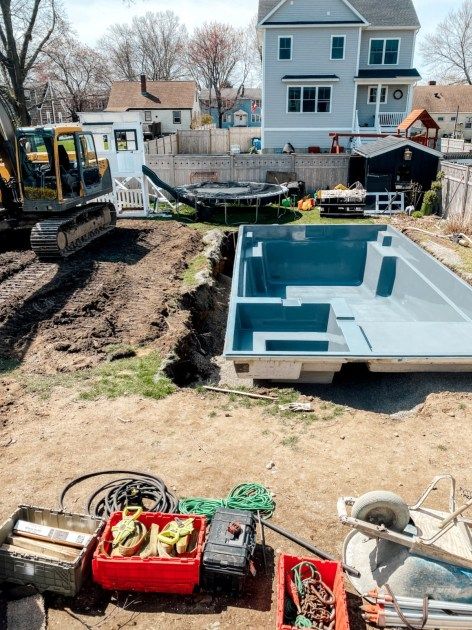
A. Site Accessibility
The accessibility of your property significantly impacts installation expenses. Should your backyard be hard to reach, necessitating special equipment or extra labor to move materials, the total cost will rise.
Homes with tight entryways, steep inclines, or other access difficulties typically face higher installation charges.
B. Preparation of the Site: Clearing the Ground
Before the installation begins, the area where the inground plunge pool will be situated needs to be prepared. This includes clearing any vegetation and ensuring that the ground is flat and stable. If there’s a need for additional excavation or leveling, it could add to the cost. Likewise, if there are trees, fences, or any structures that need to be removed, that’s another cost to consider.
C. Excavation: The First Dig
After site preparation, the excavation process begins. The cost of this phase will depend on the size of the pool and the type of soil in your yard. Rocky or difficult soils may require more labour-intensive work, thus driving up the cost. Above-ground plunge pools require less excavation, and therefore less costs.
C. Plumbing and Electrical Setup: Making It All Work
Plumbing and electrical work are two major components of pool installation. For plumbing, the cost depends on the complexity of the system. If you have a heater, for instance, it would require additional plumbing which adds to the cost. Similarly, the electrical setup for lighting and filtration systems needs to be factored in.
D. Labor Costs: The Human Factor
All these steps involve labor, which is another significant cost factor. Labor costs can vary widely, depending on the region and the complexity of the project. In the Gold Coast area, the labor cost could be a substantial part of the overall installation cost.
E. Permissions and Inspections: Keeping It Legal
Lastly, don’t forget about the necessary permissions and inspections. Building a pool requires permits, and each city has its own set of codes and inspections. These might seem like minor details, but they can add up and are a necessary part of the pool installation process.
4. Optional Extras – Landscaping and Surrounds
Average Price Range: $1,000 – $10,000 (per feature)
Custom features such as heating, lighting, waterfalls, or a jet system can drive the price north.
A. Water Features: The Splash Factor
Adding a water feature to your concrete plunge pool, like a waterfall or a fountain, can enhance the aesthetic appeal and create a calming ambiance. However, these features aren’t just about the initial equipment cost. They also require additional plumbing and may increase your ongoing maintenance costs, making them a factor to consider when budgeting.
B. Heating Systems: Comfort All Year Round
In the Gold Coast, you might want to use your concrete plunge year-round. This makes a heating system an appealing extra. The type of heating system—solar, electric, or gas—will influence the installation and running costs. Solar is generally cheaper to run but more expensive to install, while gas and electric heaters can have higher ongoing costs.
C. Lighting: Illuminate Your Nights
Underwater lighting can turn night-time swims into a magical experience. LED lights are more energy-efficient, last longer than traditional bulbs, and can even change colors to create a desired mood. However, installing lighting requires additional electrical work, which adds to the cost.
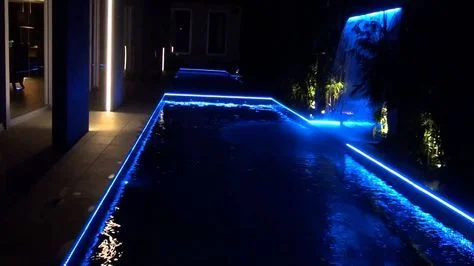
D. High-End Materials: A Touch of Luxury
You might opt for high-end materials like mosaic tiles or a natural stone pool deck to add a touch of luxury to your small backyard plunge pool. These materials can significantly increase costs, both due to the material cost itself and the specialised labor required for installation.
E. Automated Systems: The Convenience Factor
Automation systems can control everything from your pool’s filtration and heating to its lighting and water features. While they add a level of convenience, they also come with additional costs for the system itself and its installation.
F. Pool Covers: Safety and Cleanliness
Pool covers offer a dual benefit: they can keep your pool clean and safe when not in use. Automatic pool covers that operate at the touch of a button provide convenience but are more expensive than manual covers.
The Less Visible Costs
Running and Maintenance Costs
The cost for a small pool on the Gold Coast doesn’t end at installation. Regular maintenance, water sanitisation, and heating can add to the ongoing costs.
The Cost of Time
Time is money. The construction period can vary from a couple of weeks to several months, depending on the project’s complexity.
Plunge Pools Gold Coast prides itself on short installation periods of only 3-4 weeks for precast pools. Custom pools can take up to 3 months.
Conclusion
So, there you have it!
An honest, down-to-earth answer to the question: What’s the price for a plunge pool on the Gold Coast? While it’s a substantial investment, the cost is easily offset by the value it adds to your home, not to mention the priceless leisure and health benefits.
Keep in mind, though, that this isn’t a decision to dive into headfirst. Consider all the factors, do your homework, and pick the pool that best matches your dreams and budget.
In the end, every penny spent could be a step closer to creating your personal paradise, a private oasis that is worth diving into!
(Note: The prices mentioned in this article are rough estimates and can vary based on various factors. It’s recommended to get a detailed quotation from a professional before embarking on your project.)
FAQs
1. Is a plunge pool worth the investment?
Absolutely! It’s not just a pool; it’s a lifestyle upgrade. Apart from boosting your property value, it’s a great source of leisure, relaxation, and physical wellness.
2. Can I install a plunge pool in a small backyard?
Indeed, you can! The compact size of plunge pools makes them ideal for small spaces. They can be tailored to suit your backyard, no matter how petite it is. Get in contact with our installer team for more details.
3. How much does it cost to maintain it?
Typically, plunge pool maintenance could cost between $120 and $350 per season. This includes the costs for regular cleaning, chemical balancing, and equipment check-ups.
4. Can I heat my plunge pool?
Yes, you can. While adding a heating system will increase the initial cost, it ensures you can use the pool all year round, making it a popular choice for many homeowners.
5. What’s the best material for a plunge pool?
The “best” material varies based on your preferences and budget. Precast concrete is popular due to its durability and low maintenance, but a fibreglass pool is easier to install. Meanwhile, vinyl liner pools are typically the most affordable option.
6. How long does it take to install a pool?
The installation time can vary greatly, depending on the pool type and the specifics of your project. Generally, it could range from a 4 to 12 weeks.

